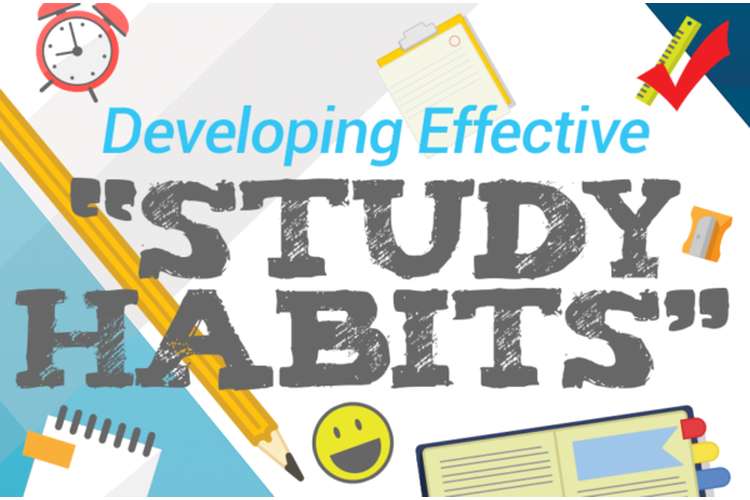Studying can seem like quite the chore and with life’s many distractions, it can be difficult to concentrate on your books. Unfortunately, if you’re in school or you plan on taking one professional exam or another (or even a theory driving test!), studying is the only way you’re going to stand the chance of passing.

Many people choose to “chew and pour,” where they cram large amounts of information into their heads by committing it to memory, but this isn’t the most effective way to study. In this post we’re going to explore more effective, easier ways to study.
The Different Learning Styles
Learning styles group the common ways that people learn. Some people predominantly use one learning style while others switch between styles depending on the circumstance. You may not have realized it but knowing your learning style is more important than you think; it can guide the way you learn so that you’re receiving information in a way that allows you to better recollect it. There are 7 learning styles in all and they are:
- Visual (spatial): You prefer using pictures, images, and spatial understanding.
- Aural (auditory-musical): You prefer using sound and music.
- Verbal (linguistic): You prefer using words, both in speech and writing.
- Physical (kinesthetic): You prefer using your body, hands and sense of touch.
- Logical (mathematical): You prefer using logic, reasoning and systems.
- Social (interpersonal): You prefer to learn in groups or with other people.
- Solitary (intrapersonal): You prefer to work alone and use self-study.
Take a little time to figure out what your learning style is. It’s ok to use a mix of different styles if that works for you!
The SQ3R Method of learning
SQ4R is a method of learning where you go through a set process. SQ4R stands for SURVEY, QUESTION, READ, RECORD & RECITE AND REVIEW.
Survey: Here, you must skim through the material you’re going to study. Consider the following:
- The title, headings, and subheadings
- Pictures, captions under pictures, charts, graphs or maps
- Review questions or teacher-made study guides
- Introductory and concluding paragraphs
- Summaries
Question: While you are surveying the study material, write down questions that pop up in your head using the following words: who, what, where, when, why, or how. This way, you’re setting a purpose for what you’re about to study and you’re engaging your mind and getting it ready to learn.
- Turn the title, headings, subheadings into questions
- Read questions at the end of the chapters or after each subheading
- Ask yourself,
“What did my lecturer say about this chapter or subject
during the class?” - Ask yourself,
“What do I already know about this subject?”
Read: Here’s where you’re going to actively read your study material. Look at the questions you wrote down and read your material to find answers to them. Consider doing the following as well:
- Answer questions at the beginning or end of chapters or study guides if any exist
- Reread captions under pictures, graphs, etc.
- Note all the underlined, italicized, bold printed words or phrases
- Study graphic aids
- Take your time when reading difficult passages
- Reread sections that are not clear until you understand what you’ve read
Record & Recite: At this point you should have all the answers to the questions you created. Recite the answers and try and put them in your own words for better understanding and retention. Also:
- Take notes from your study material and remember to write them in your own words
- Underline or highlight important points you’ve just read
- When reciting, the more senses you use the more likely you are to remember what you’ve read: Triple strength learning: Seeing, Saying and Hearing
Quadruple strength learning: Seeing, Saying, Hearing and Writing
Review: Here, try and answer the questions you created without referring to your notes or to your study material. If you’re unable to, don’t fret, just go over the questions and answers and test yourself again. Do this until you’re confident you know and understand the questions and answers.
- Remember that reviewing is an ongoing process. Until you have written the test/exam, you should constantly review what you’ve learnt
- Make flash cards that you can easily refer to
- Recite the answers to questions orally or write them down (in your own words!)
Here’s a less than 3 minute video that sums up what SQ4R is.
The SQ4R method is a great way of learning new subject areas or topics. Other good study habits that you should consider developing are:
- Plan specific times to study and stick to it. Also try to study at the same times each day
- Don’t study for excessively long periods of time as you’ll get tired and the studying will be less effective. If you must study for long, take short breaks to refresh your mind
- Get rid of distractions such as phones, friends, the television, etc., when you’re studying. You want to remain focused, not lose your train of thought
- Divide the material you have to study into sections instead of cramming everything into one study session
- Tackle the difficult subjects first
- Try studying with a group of people where you discuss the material you’ve been reading
Studying is necessary so why not do it the right way?
